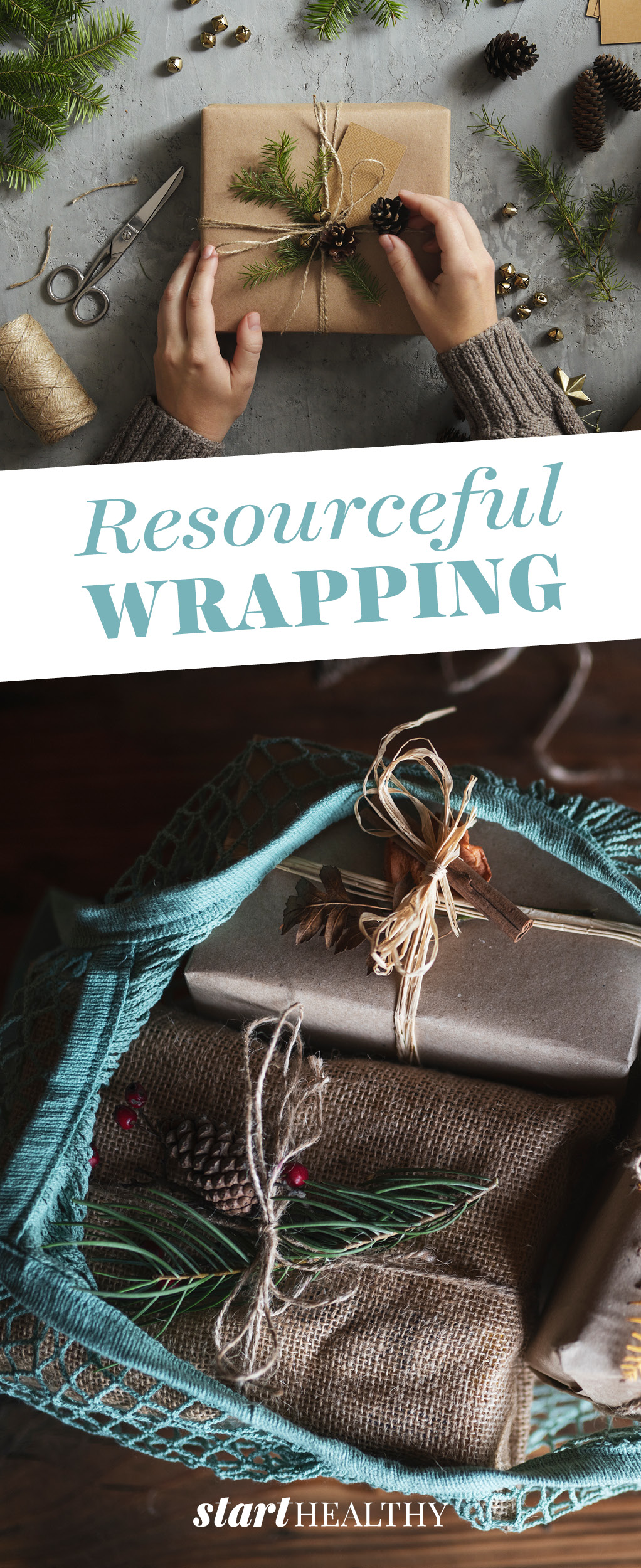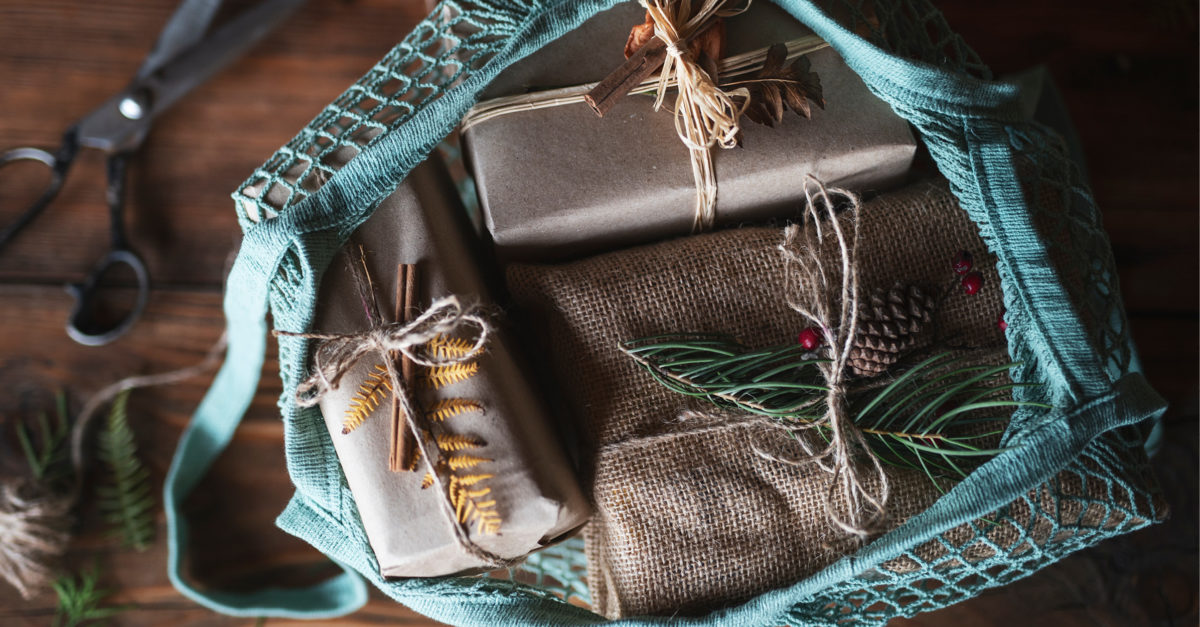Resourceful Wrapping
Ask any kid what his or her favorite part of the holiday season is, and “gifts” will likely be one of the top answers. But that response isn’t relegated to just young ones.
As grown-ups, who among us doesn’t smile while staring at a present that someone so thoughtfully bought (or made) and took the time to wrap for us? (Other than Ebenezer Scrooge.)
The difference is that adults tend to get as much out of giving as receiving—and that includes wrapping all those presents. In fact, on average, people voluntarily dedicate an estimated three to four hours every year wrapping presents during the holiday season.
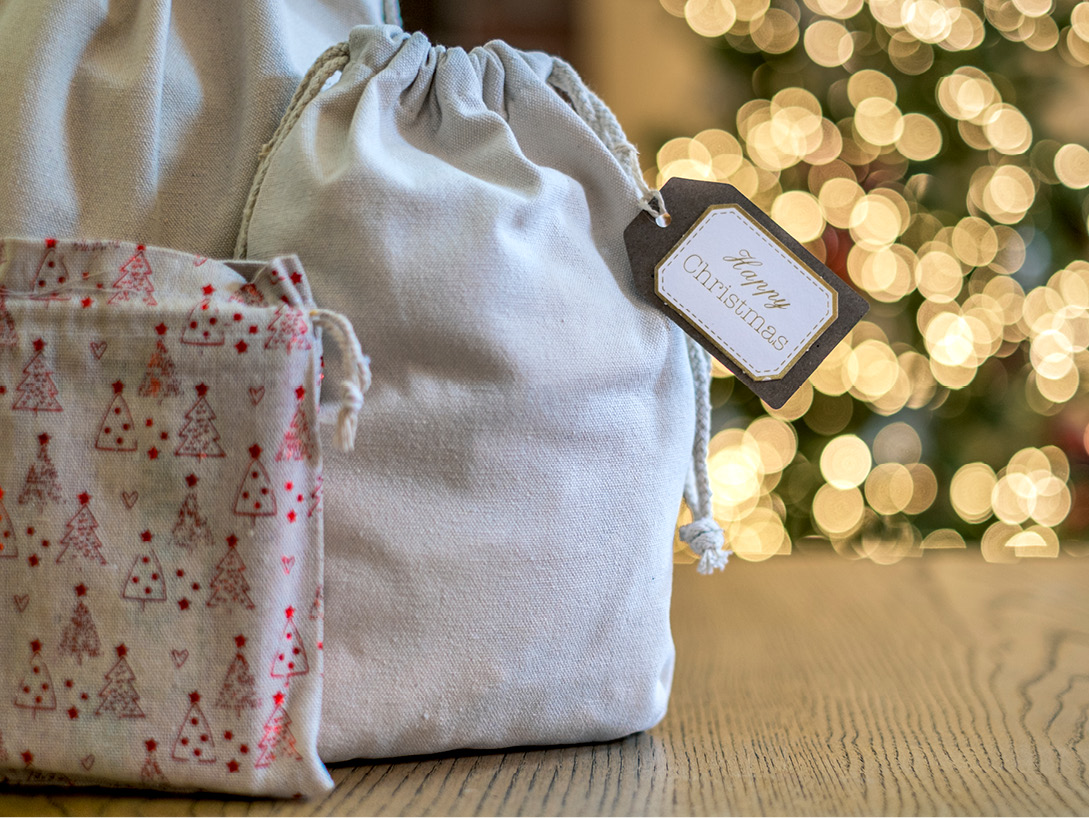
And then there’s the flip side: after those carefully wrapped presents are torn open. What happens to all those piles upon piles of paper? There’s a good chance that they end up in trash bags and out in the trash can without a second thought.
Unfortunately, that’s a huge problem for the planet. In fact, according to Earth911 estimates, Americans alone use 4.6 million tons of wrapping paper annually—and half of it ends up in landfills. Other estimates suggest that a quarter-million miles of wrapping paper is trashed worldwide during the holidays. That’s a lot of trees being used and trash not degrading.
You may be thinking, “If I recycle other paper year- round, why can’t I just recycle wrapping paper? Well, it has to do with the broad definition of “paper” in wrapping paper—and all that’s added to it to make the season bright.
According to the American Forest and Paper Association (AF&PA), plastic-coated wrapping paper isn’t recyclable, nor is foil paper, cellophane paper, or glittery paper. All these truths certainly narrow down the earth-friendly options. Fortunately, there are steps you can take to make your gift wrapping as eco-friendly as it is delightful.
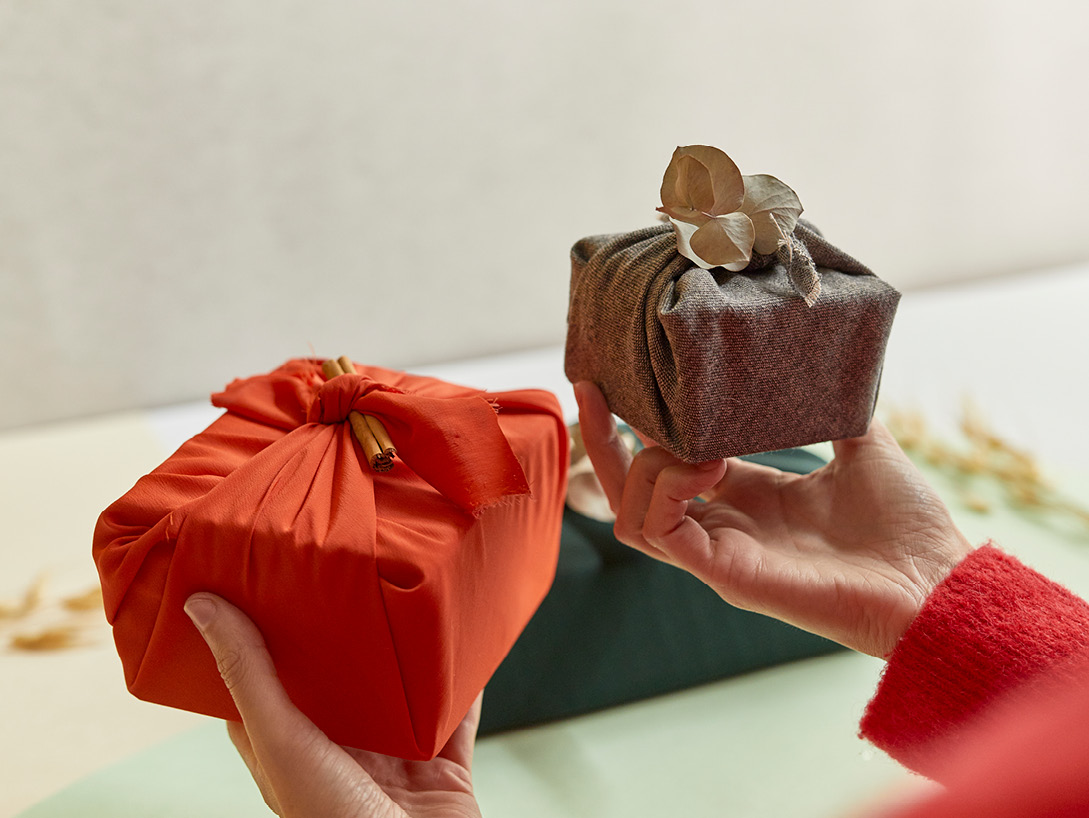
Do DIY Wrapping
Give second life to items you already have lying around your home, such as brown paper bags or newspapers, for your gift wrap.
Support Companies That Care
Some of the big players in the industry, such as Hallmark, do make sustainable, recyclable wrapping paper for the holidays; you just have to hunt it down. And, believe it or not, some companies have been in the business of making environmentally friendly wrapping paper for years. Hawaii-based Wrappily tops this list, printing its line of products on 100 percent recycled newspaper print and offering over a dozen fun holiday designs. And another, Triumph Plant Company, helps you to give the gift that keeps on giving—its wrapping paper contains wildflower seeds, so it can be planted rather than placed in the trash.
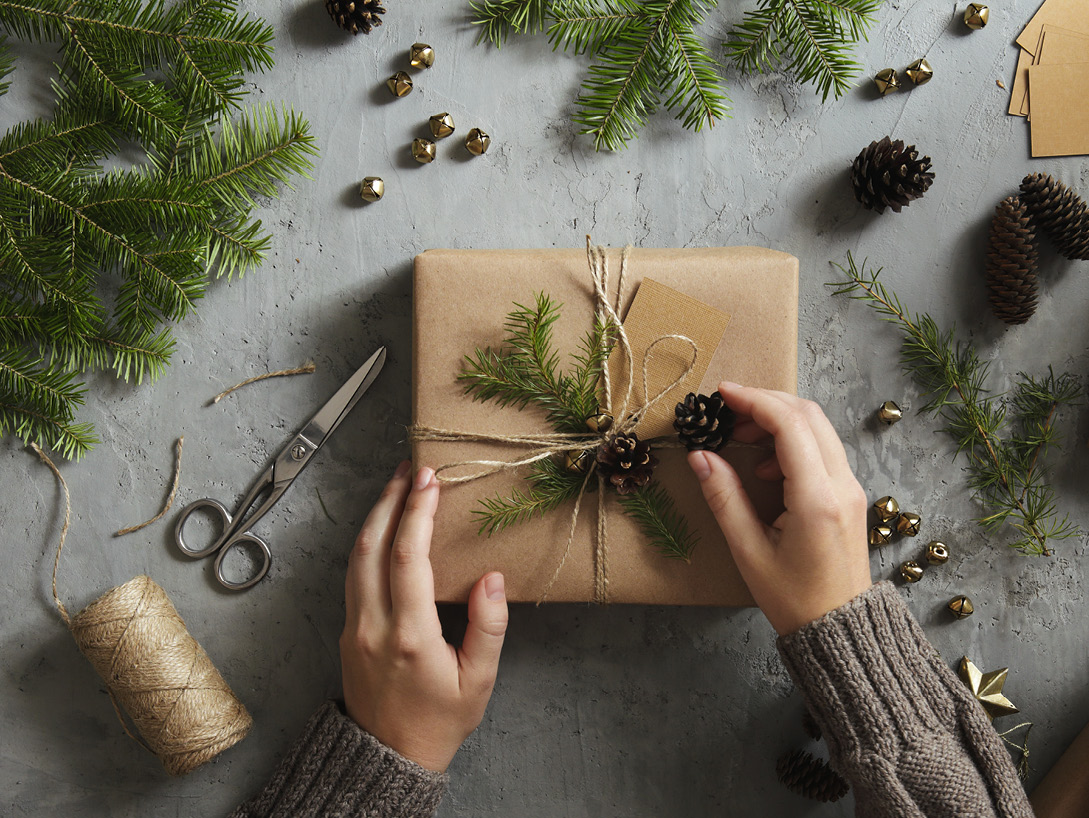
Make Simple Changes
The best thing you can do to help the environment is start with yourself, your choice of gift wrap, and how you dispose of it and the boxes within it. Being intentional about the wrapping paper you use, as discussed earlier, is a good place to start. But there are other easy ways to make a difference, too.
- Bag it.By their nature, gift bags are made to be reused—so take advantage of this alternative, if possible. Fabric bags, in particular, are a hot option: they’re elegant yet eco-friendly since they can be used for years. And, of course, paper gift bags can be recycled.
- Don’t put a bow on it.Well, usually not. Bows aren’t generally recyclable, but they are reusable with a little glue or well-hidden tape. Likewise, ribbons can’t be recycled. Inside the box, though, feel free to make use of tissue paper, as long as it’s not foil.
- Flatten cardboard.This simple—yet often neglected—task can make a big difference in the recycling process, especially with a record number of packages being delivered during the holiday season last year.
Know your stuff.
Being educated about recycling is a good practice overall, but it’s especially true during the holidays. Simply contact your disposal company to find out what it will and won’t recycle. Another way to determine whether you should trash or recycle your paper? Do a scrunch test. The AF&PA recommends scrunching the paper up in your hand—if it stays in place, it can be recycled; however, if it expands, it likely can’t be.
As you can see, options abound when it comes to being more eco-friendly this time of year. So give yourself—and Mother Nature—the ultimate gift this season. Consider alternate means of concealing your gifts to loved ones to truly make your holidays treasure-filled rather than trash-filled.
